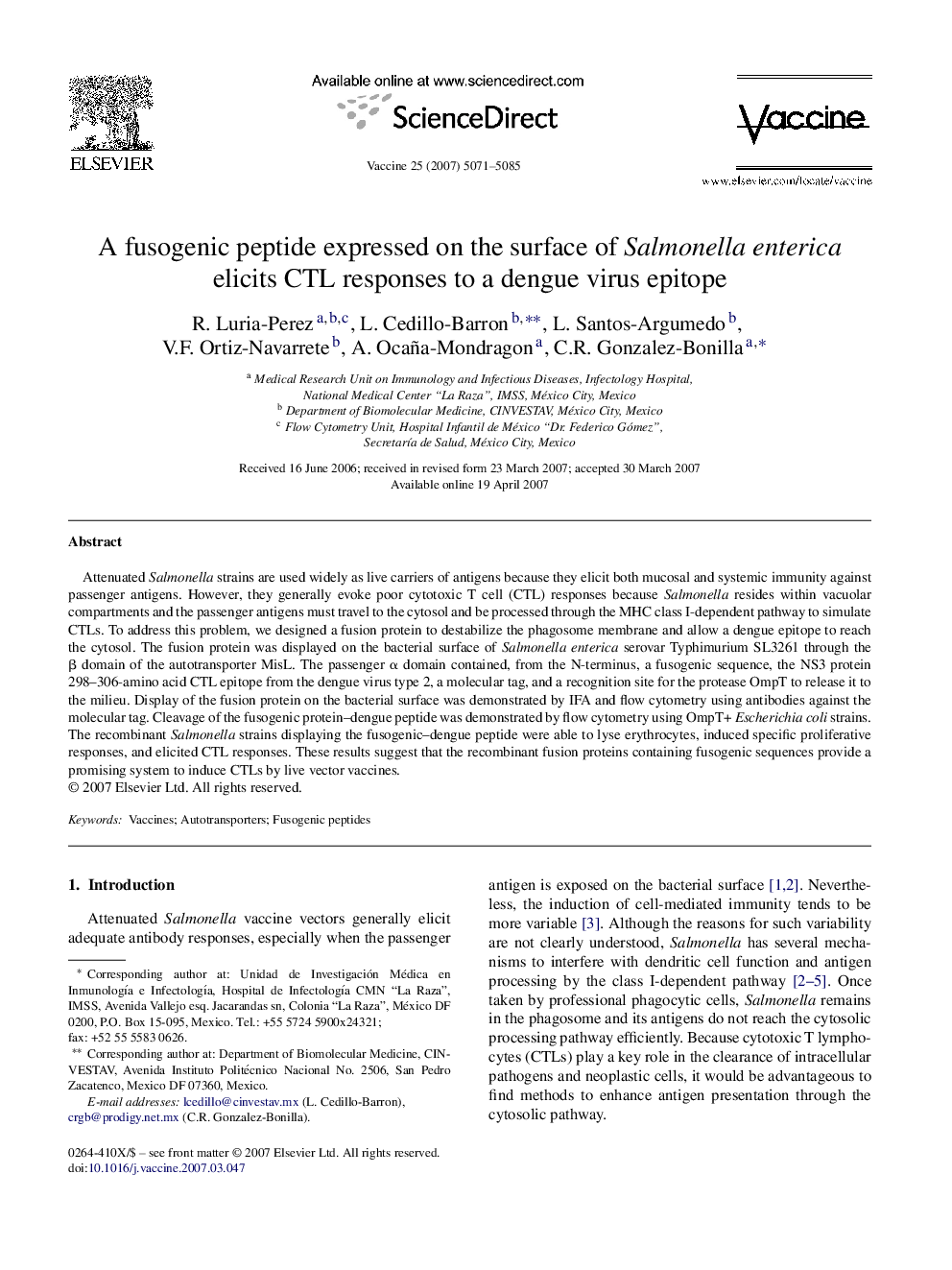| Article ID | Journal | Published Year | Pages | File Type |
|---|---|---|---|---|
| 2406582 | Vaccine | 2007 | 15 Pages |
Attenuated Salmonella strains are used widely as live carriers of antigens because they elicit both mucosal and systemic immunity against passenger antigens. However, they generally evoke poor cytotoxic T cell (CTL) responses because Salmonella resides within vacuolar compartments and the passenger antigens must travel to the cytosol and be processed through the MHC class I-dependent pathway to simulate CTLs. To address this problem, we designed a fusion protein to destabilize the phagosome membrane and allow a dengue epitope to reach the cytosol. The fusion protein was displayed on the bacterial surface of Salmonella enterica serovar Typhimurium SL3261 through the β domain of the autotransporter MisL. The passenger α domain contained, from the N-terminus, a fusogenic sequence, the NS3 protein 298–306-amino acid CTL epitope from the dengue virus type 2, a molecular tag, and a recognition site for the protease OmpT to release it to the milieu. Display of the fusion protein on the bacterial surface was demonstrated by IFA and flow cytometry using antibodies against the molecular tag. Cleavage of the fusogenic protein–dengue peptide was demonstrated by flow cytometry using OmpT+ Escherichia coli strains. The recombinant Salmonella strains displaying the fusogenic–dengue peptide were able to lyse erythrocytes, induced specific proliferative responses, and elicited CTL responses. These results suggest that the recombinant fusion proteins containing fusogenic sequences provide a promising system to induce CTLs by live vector vaccines.
